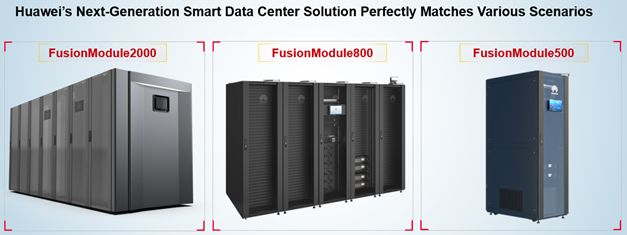Huawei introduced a new smart modular data center solution for small and edge computing scenarios, including three products — FusionModule500, FusionModule800, and FusionModule2000 — designed for different industrial needs. Promising to “Make Any Room a Data Center,” the online launch event gathered together Information and Communications Technology (ICT) thought leaders and key partners from across the Asia-Pacific (APAC) region.
In his opening remarks, Brandon Wu, Chief Technology Officer (CTO) of Huawei’s Asia Pacific Enterprise Business Unit, emphasized the need to ensure enhanced resiliency across all industries, given the impact of the global pandemic. Indeed, Mr. Wu explored the key trends emerging in edge computing, namely: better connected infrastructure, increased resiliency through the use of edge computing, and enhanced reliability through the use of Artificial Intelligence (AI).
Indeed, market predictions suggest that 75% of all data generated by enterprises will be processed at the edge within four years. Demand for real-time interactions is driving businesses to bring computing power closer to end-users. Small and edge data center are making appearances in several industries and scenarios, as a result.
- Retail: Small and edge data centers can exist within retail outlets as retailers close the gap between online and offline sales.
- Manufacturing: Edge data centers deployed in distribution warehouses are capable of managing growing volumes of inventory and shipping data; in factories, such data centers manage data generated from sensors as well as communications between equipment, contributing to a growing IIoT.
- Telecoms: Central offices of telco companies are being converted to computing rooms and used as edge data centers to make networks more dynamic.
Mahesh Choudhary, Solution Architect for the Huawei Digital Power Line, launched the new solution directly from the Huawei Digital Power Innovation Experience Center, offering a real-life demonstration for event attendees. Changing the game with SmartLi inside — Huawei’s smart lithium battery Uninterruptible Power Supply (UPS) — now any room can be made into a data center. Indeed, with far lower requirements placed on ceiling height, the Huawei Modular Data Center Solution has no need for a traditional raised floor design. Instead, air conditioner pipes and strong- and weak-current cables are routed from top-down, meaning that equipment can be accommodated in ceiling heights as low as 2.6 m, far below the 3 m minimum height required for a traditional data center.
FusionModule2000 supports a single row design, with the flexible configuration of cold and hot aisle containment and simplified architecture reducing delivery time by 50% compared to traditional alternatives.
FusionModule800 supports pre-integrated rack-mounted cooling and a UPS system, offering on-site installation in just four hours and service rollout in a mere two days.
FuionModule500 offers a highly integrated, one cabinet-one data center design, requiring only a two hour installation time, with business effectively brought online in just four hours .
At the Smart Modular Data Center Product Launch, Huawei’s partner — NetCraft Information Technology (Macau) Co., Ltd. — shared its experiences cooperating with Huawei. Benjiman Wong, the company’s Sales Director, said: “With the Huawei Modular Data Center Solution, all required components are modular. An easy way for customers to understand this solution is to consider that each component is like a building block: you can build up your castle by adding different blocks together, so you can add more blocks in the future when needed.”
Stated simply, Huawei’s Smart Modular Data Center Solution is designed as an ideal choice for small and edge data centers.
Source: Francom Asia
